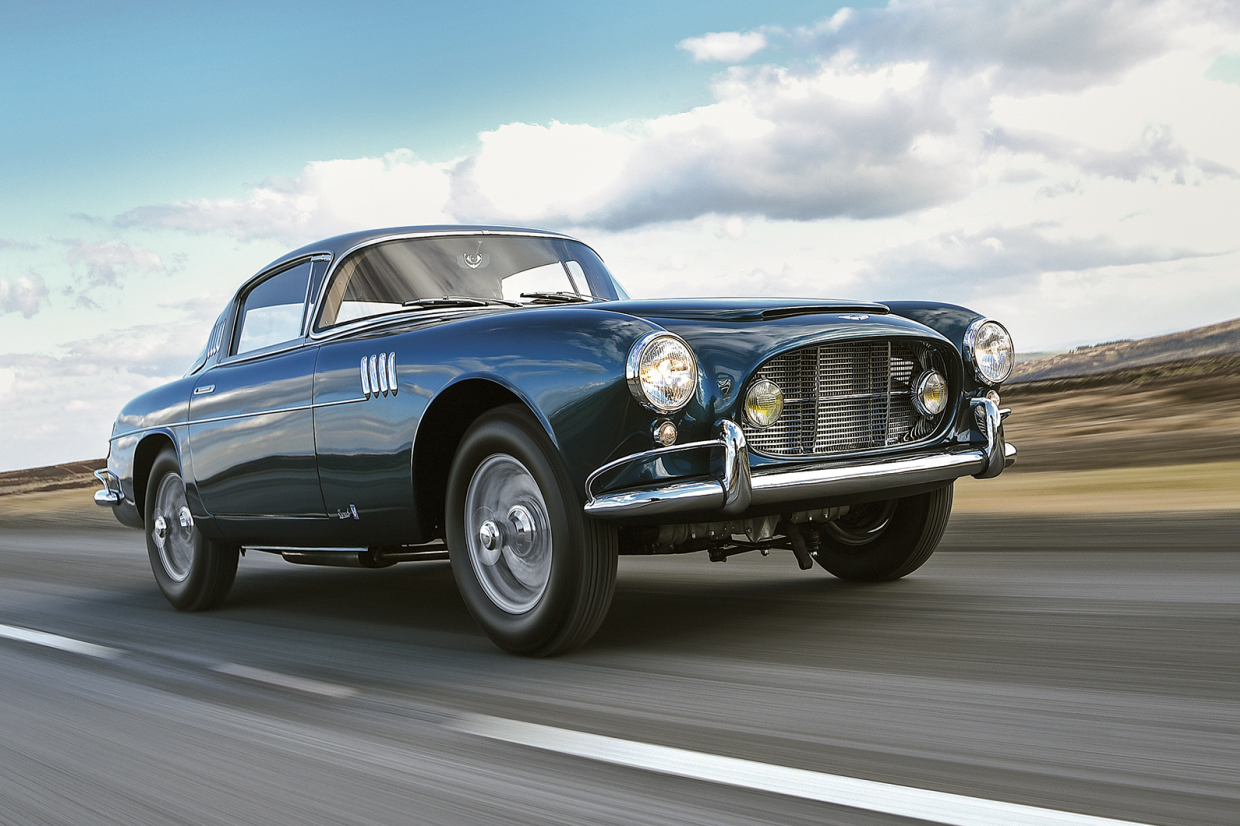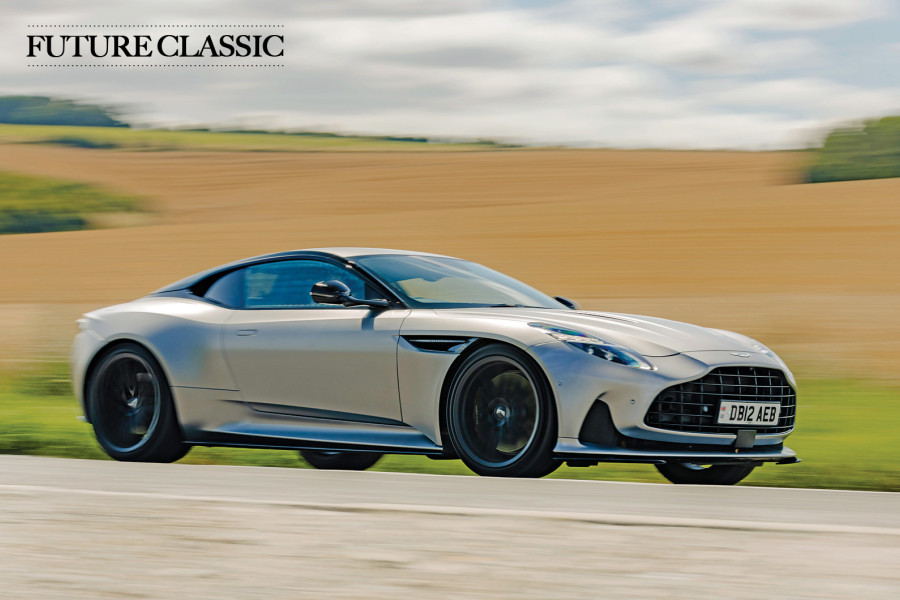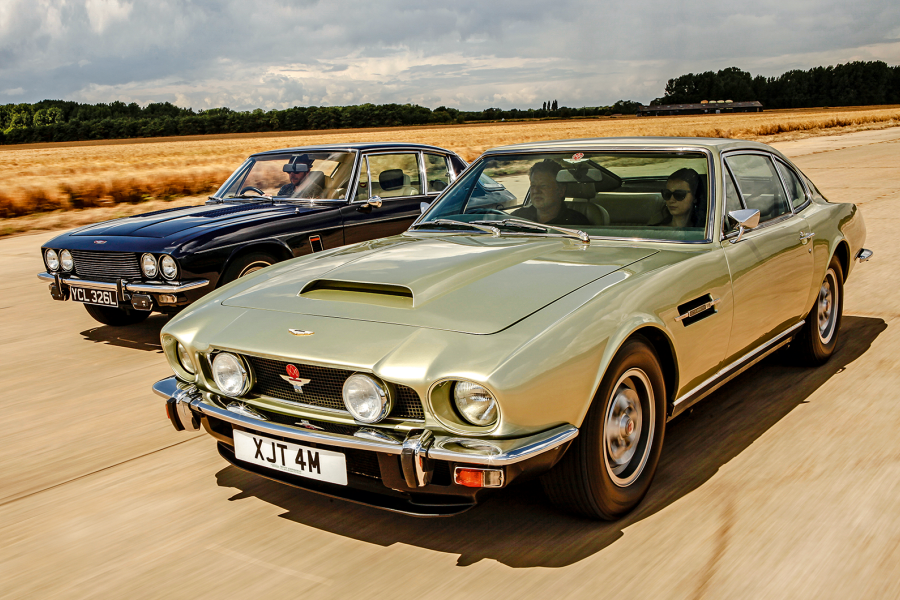Looking purposeful but somewhat lost in the deep engine bay, the LB6 straight-six fires instantly on its modern, high-torque starter motor.
It is flexible, smooth, mildly rorty and asks that you rev it harder than seems prudent at first to overcome the high overall gearing.
I’d speculate that the Vignale body is heavier than the Feltham type – and probably a shade less rigid – but even without flogging the still-fresh engine in the well-spaced indirect gears the car is sprightly enough to be interesting.
The steering weaves a little in sympathy with the undulations of the road surface – and occasionally twitches disconcertingly when you hit the brakes – but the Aston turns in well and corners tidily, with moderate understeer on its period-correct, deep-sided and narrow tyres.
The chrome accents and the lavish details of this Aston Martin add to the sense of Stateside influence
The huge drums provide adequate stopping power, with lengthening pedal movement after a few hard stops, and while the gearchange has a satisfyingly direct, mechanical action, it is possible to grab third where you wanted first.
The brawny engine will actually tolerate this abuse on the flat without too much clutch-slip.
When it’s time for a three-point turn the high-geared steering proves heavy at low speeds (the aftermarket electric power steering wasn’t switched on), but much worse is the prospect of finding reverse gear: you need two hands to lift the shaft of the gearlever up sufficiently for it to drop in.
Another possible victim of the left-hand drive configuration is a steering-wheel position so close to the door that there is no room for your elbow to articulate fully, causing some embarrassment when compensating for the not very energetic castor return on tight corners.
Aston Workshop has done a fantastic job to rescue and restore this now-unique classic car
How the Vignale drives really doesn’t matter very much, and possibly never did.
Interesting but not innovative, pretty without being truly beautiful, its fairly swift departure from the Belgian royal fleet probably had something to do with its difficult driving position and conspicuous style.
And who, after all, wanted a ‘special’ based on outdated technology – an oddity rendered pointless by the much faster and more beautiful DB4 – in an era when only the latest and greatest really counted?
All credit to Aston Workshop for saving the Vignale, then, when it might so easily have slipped through the net.
The Aston Martin’s brawny six-cylinder engine helps this classic car make good progress
With an asking price in multiple millions, this was not a project born solely out of altruism, but I suspect that it represents a great many expensive man-hours that could have realised that payday much more rapidly.
Five or six decades ago, this car would have struggled to find a patron like Fountain.
The ’60s was a golden but also less sentimental age when knowledge, reverence and scholarship for old cars was in much shorter supply.
The used-car trade of the day, if asked to value such a car, would simply have shrugged its shoulders.
Rare does not always equal desirable in the realm of classic exotica even now, and there would have been many who preferred the unpretentious simplicity of Frank Feeley’s original to the effete Michelotti flourishes of LML/802, the only surviving Vignale-bodied Aston.
Images: Will Williams
Thanks to Aston Workshop
READ MORE
Life imitates art: AC Aceca vs Aston Martin DB MkIII
It’s a Jaguar XK120 – but not as you know it
Exclusive: driving the unique Voisin C27 Aérosport
Praho: the unique Alfa Romeo you might never have heard of
Martin Buckley
Senior Contributor, Classic & Sports Car























